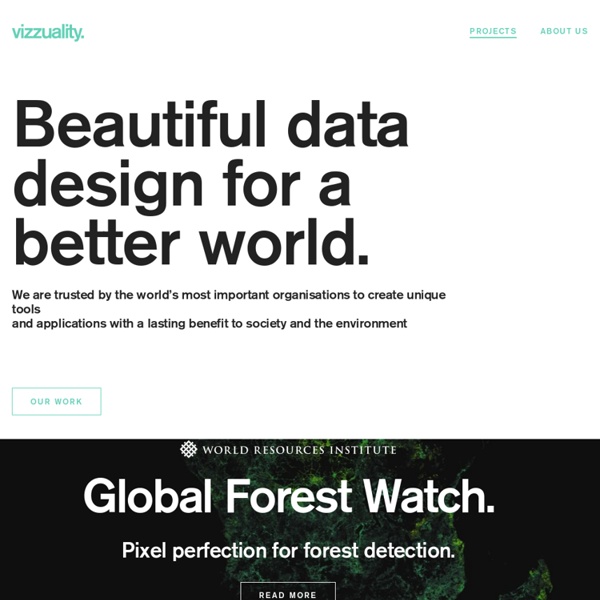



Kiln Backbone.js 活動網路平台經營模式比較 | Chirpy 六月 18, 2012 Posted by chirpy on 六月 18, 2012 in Chirpy與商業 | 3 comments 這是某Chirpy成員為了101學年度某課程期末報告在爆炸的比較了連鎖咖啡店、衣飾店、旅遊業、雜誌業、唱片業、信用卡與App付費工具後所選的自選題。 網路活動平台經營模式與提供價值比較: Meetup.com: 美國網站排名前150名社群網站,專門蒐集並協助推廣、提供以地點、興趣或主題不同類別的微型聚會訊息,並且擁有可令聚會團體自行經營的完整網路社群頁面,包含聚會各活動時程、活動討論區、相片影片紀錄以及贊助者廣告等,其體現團體特色同時亦可作為推廣邀請更多人參與之用,結合推廣與經營於一身使其在Facebook競爭下依然持續獲得使用者青睞,推出後在而其提供的團體募款與贊助服務,從此一服務中對社團發起及經營人收取固定的頁面與宣傳維護費,以及收取聚會團體和聚會贊助者媒合廣告費是其主要營利模式。最後該網站同時也針對網路社群商務,協助不同的品牌聚集各處品牌愛好者以進行聚會。 Citytalk: 台灣活動網站排名前150名,主要為一主題活動、商家促銷活動之訊息蒐集與散布平台,其資訊類型涵蓋藝文、促銷、展演、學習、影視、夜生活等無所不包,提供服務初期以提供發布者同步Facebook粉絲頁與活動訊息、流量查詢、客製化活動版面之功能,但其價值至後期最大項演變為活動訊息的蒐集,並以此大量內容帶來的閱覽流量。 活動通Accupass: 新興起的活動網站,其價值在於提供一工具型網站,其工具工用至少包含了下列元素:自定義的活動資訊展示頁,可管理報名人數、線上報名與問卷回饋系統、報名人管理及群發通知系統,驗票與線上報名費、票款代收服務。 Chirpy.tw: 由數位台大學生發起,以台大學生為服務客群,以最精簡之方式結合上述三項網站之共同價值項目,分別為社群經營、蒐集與推廣活動訊息以及活動舉辦者工具,同時輔以當前網路趨勢之簡潔介面,並結合資訊在地化、客製化之服務快速推出的網路平台。 Share this to your friend.
UnitedVisualArtists IAMAT Blog: How To Travel Comfortably With A Chronic Lung Condition Guest post by Faith Franz of The Mesothelioma Center. Making these arrangements can be time consuming, but with foresight, patience and diligence, patients with chronic lung conditions can ensure a smooth and easy travel experience. The following tips can help streamline the process. General Tips Get your doctor's approval.
[AWS] Amazon AWS 實戰筆記與心得 - HINA::工程幼稚園 雲端正夯,所以說把工作上的事情丟到雲端上面去也是很合理的。至於為什麼不選種花電信的 HiCloud 呢?這種事情還是去擲筊會比較準。 別鬧了,沒有競爭力的台灣 IDC 們 電費是經營IDC的最大成本??? 搞錯了吧??? HiCloud 的頻寬計價現況與對比 Amazon AWS 的簡要分析 你看完再決定你要不要用 HiCloud… Why Amazon? 跟傳統的 Hosting 比起來,當然可以自己控管的虛擬主機是比較有彈性的。 好處是什麼, 五花八門的服務因為他是 Amazon 壞處是什麼, 什麼都要自己來新的東西太多學不完 其實優缺點應該不會這麼少,不過這種事情其實是見仁見智,我覺得好的地方可能大家不那麼認為。 使用的服務 最近因為要把工作上的東西全數轉移到 AWS 上面,雖然之前已經有摸過一陣子,但是對於沒碰過得服務還是苦手了好一段時間。 Amazon S3, Amazon EC2 這個應該不用特別說明吧? 所以,我們就可以從 EC2 上面,利用 Amazon 提供的 SDK 來將檔案放到 S3 去作儲存的動作。 另外附註一提的是,從 Flickr, Picasa, Facebook 爾等大型網站,利用 cURL 取得相片檔案(均取最大原始圖檔,透過 EC2 抓取,再轉存到 S3,大概一秒。 Dropbox 則例外,從 EC2 上傳到 Dropbox 並沒有想像中的快(笑 Amazon RDS 這是 Amazon 所提供的關聯式資料庫服務,說實在的,他的價格並沒有想像中的便宜。 雖然說 Amazon 也有提供 nosql 的資料表可用,不過目前實際工作需求,還是以關聯式資料表為主。 當然,所謂的連線就是 mysql -u <Your RDS root> -p -h <Your RDS EndPoint> 這種方式。 至於說 RDS 的效能,這裡有篇有趣的文章可以參考一下, MySQL on Amazon RDS part 1: insert performanceMySQL on Amazon RDS part 2: Determining Peak Throughput 或許你會想說,既然我已經有 EC2 了,那我架在 EC2 上面就好了嘛,關於這點,這裡也有一系列文章可以參考,我個人是覺得,這種事情沒有必要一定要用在哪裡,端看個人需求。 作者好像還有 Part 6, 7 還沒寫,可以持續關注一下! 不過!
Maga Design Blog Six of this Year's Most Riveting Maps Every year, there seems to be a handful of maps that fascinate the masses and fire up the social media platforms. Listed here are some of the more fascinating maps and GIS data visualizations that caught the public’s attention this year. Wind Map Pulling near real time surface wind data comes from the National Digital Forecast Database, this dynamic wind map is incredibly calming to view. A visit to the Wind Map site as Hurricane Sandy bore down on the East Coast: Wind Map Captures Hurricane Sandy. United States of Starbucks The intense proliferation of retail outlets like McDonalds and Starbucks also lends itself to data visualizations. Historical Hurricane Paths John Nelson of IDV Solutions mapped out historic hurricane and tropical storm paths. Map of hurricanes and tropical storms since 1851. Population Density Map Derek Watkins, whose stream nomenclature map went viral last year, produced another intriguing map earlier this year showing a sliding scale population density of the world.
Ruby on Rails 作者:蔡佳燕 / 臺灣大學計算機及資訊網路中心程式設計組 最簡潔有力的網頁框架,網頁的「殺手程式Killer Application」,網頁程式設計的「簡約奢華時尚」。網頁應用程式的軟體從業人員可以試試Ruby on Rails,說不定真的可以在「鐵軌上找到紅寶石」喔! 簡介 開發網頁應用程式的軟體從業人員們,還在為寫程式或寫設定檔而焦頭爛額嗎?試試Ruby on Rails,就算你不喜歡,也不會有任何偒害。事實上很多人用了就上癮了,因為它為你節省許多寶貴的時間,假日不必再到公司加班,每天準時下班。 Ruby(紅寶石) 認識Ruby on Rails之前,我們先來看看Ruby是什麼? An Introduction to Ruby的作者Colin Steele說:「Ruby 結合了Smalltalk, C, Perl, and Python 最棒的特色,非常地優雅自然,在一天之內我就著迷了。」 命名小插曲-Ruby指的是珍貴的紅寶石,它不是字頭縮寫字。 想要更進一步認識這個珍貴的紅寶石嗎? Ruby on Rails 接下來我們就要來看看Ruby on Rails。 MVC (Model-View-Controller) RoR的基本架構是MVC(Model-View-Controller),Model處理和資料庫之間的溝通,View則是產生使用者介面,使用者透過View的頁面發出要求,Controller則是處理使用者的要求,若要使用到資料庫,則和Model溝通,由Model去進行資料庫的存取,再由View根據結果產生使用者看到的頁面。 Active Record Active Record是RoR所提供的ORM (Object/Relational Mapping) layer。 Active Record主要利用到之前提到的原則之一,就是慣例取代設定。 ERb (Embedded Ruby) 在View的這部份,檔案的副檔名為".rhtml",Rails看到這個副檔名就知道要使用ERb來展開該檔的內容。 Scaffold(由資料庫自動產生可以使用的程式) 當你把資料庫建立好,接下來用一個簡單的Scaffold動作,你將擁有整個專案程式的雛形,也許使用者介面還不夠漂亮,但是程式已經堪用,它有最基本的CRUD(Create, Read, Update, Delete)功能。
Boost Labs :: Data Visualization : Infographics : Web Innovation :: Washington DC : Maryland : Virginia An innovation will attach patients' electronic medical record to the foot of their hospital bed Public release date: 3-Dec-2012 [ Print | E-mail Share ] [ Close Window ] Contact: Ana Herreraoic@uc3m.es Carlos III University of Madrid This press release is available in Spanish. Information and Communication Technologies (ICT) present tremendous potential in the field of healthcare, according to the researchers. In this project, IonIDE is trying to attach the EMR to the foot of the patient's bed. "We have developed a speech recognition system that allows the IonPAD to be controlled by voice, in addition to a voice synthesis system that allows individuals with a visual handicap to understand what is shown on the screen," explains Luis Puente, of the SOFTLAB research group at UC3M and the Centro Español de Subtitulado y Audiodescripción (CESyA- Spanish Center for Subtitling and Audiodescription), which operates in the University's Science Park. For doctors and patients [ Print | E-mail AAAS and EurekAlert!